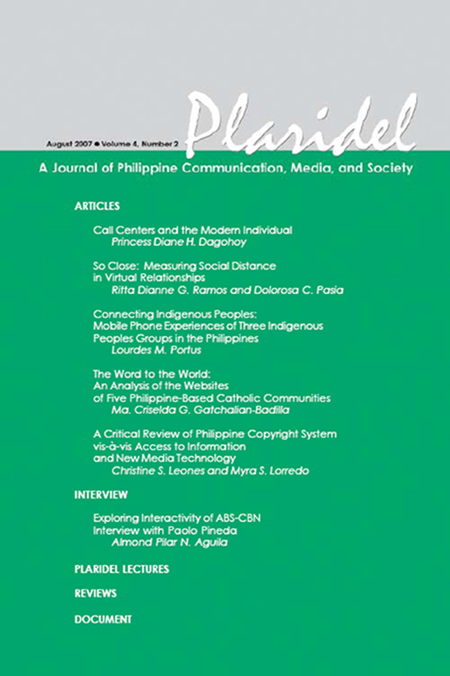So Close: Measuring Social Distance in Virtual Relationships
Abstract
The objective of the study is to create a measure for social distance in virtual relationships developed through online interaction. The researchers patterned their scale from the Bogardus Social Distance Scale, incorporating the recommendations of Michael Heraghty (2002). The researchers used quantitative and qualitative methods in determining the concepts and variables that could be included in their social distance scale for virtual relationships. Selection of informants and respondents was done using the purposive method of non-probability sampling. Focus group discussions and online interviews were first conducted to determine the important variables and appropriate arrangement of items in the social distance scale. Subsequently, social distances toward different kinds of people and the validity and reliability of the variables in the scale were examined through surveys, the primary quantitative research method of this study. Generally, survey results showed that respondents were most likely to interact with females, people within their age bracket, and people residing within their city or municipality. In contrast, they were unlikely to pursue any interaction with gays and lesbians. Survey findings also showed that online interactions start with including a person in someone’s messenger account; conversations – even those about non-personal topics – can only take place after the respondents have added a person in their messenger list.
Published
2007-11-20
How to Cite
RAMOS, Ritta Dianne G.; PASIA, Dolorosa C..
So Close: Measuring Social Distance in Virtual Relationships.
Plaridel Journal of Communication, Media, and Society, [S.l.], v. 4, n. 2, nov. 2007.
ISSN 1656-2534.
Available at: <https://journals.upd.edu.ph/index.php/plaridel/article/view/492>. Date accessed: 07 sep. 2025.
Section
Articles



